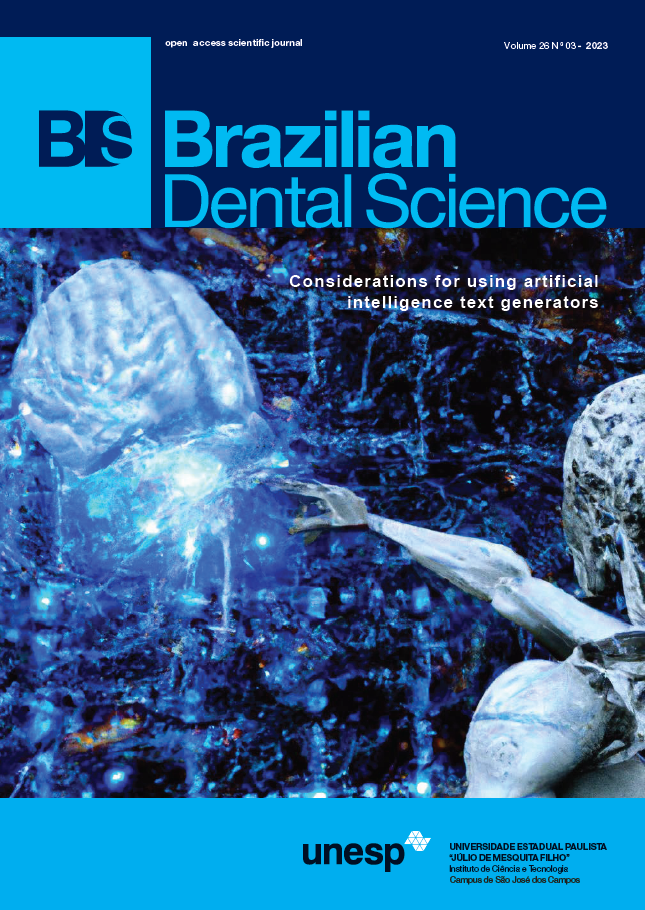Effect of novel pre-sintered zirconia surface treatment on shear bond strength between zirconia and veneering porcelain compared to conventional surface treatments: an in-vitro study
DOI:
https://doi.org/10.4322/bds.2023.e3838Abstract
Objective: to evaluate the effect of novel zirconia surface treatment method on shear bond strength between zirconia and veneering porcelain compared to air abrasion and CoJet surface treatment methods. Material and Methods: twenty-one zirconia ceramic discs were fabricated with diameter of 7mm and 3mm thickness and divided according to surface treatment into three subgroups, control group I: Air Abrasion (n=7), group II: CoJet (n=7) and group III: Z-etch (n=7). Porcelain was built over the zirconia specimens with a customized mold and fired in a ceramic furnace. All specimens were thermocycled (20000 cycles) between 5°C – 55 °C with a dwell time of 30 seconds in distilled water and shear bond strength of veneering porcelain to each zirconia specimen was tested using a universal testing machine. Results: numerical data were explored for normality by checking the distribution of data and using tests of normality (Kolmogorov-Smirnov and Shapiro-Wilk tests). One-way ANOVA test was used to compare between the groups. There was a statistically significant difference between the three groups (P-value = 0.002, Effect size = 0.503). Pair-wise comparisons between groups revealed that Z-etch showed the statistically significantly highest mean shear bond strength. Conclusion: zirconia coating using z-etch is showing promising results in promoting higher bond strength than conventional surface treatment methods as air abrasion and silica coating.
KEYWORDS
Air-abrasion; Dental materials; Shear bond strength; Surface treatment; Z-etch; Zirconia.
Downloads
Published
How to Cite
Issue
Section
License
Brazilian Dental Science uses the Creative Commons (CC-BY 4.0) license, thus preserving the integrity of articles in an open access environment. The journal allows the author to retain publishing rights without restrictions.
=================




























